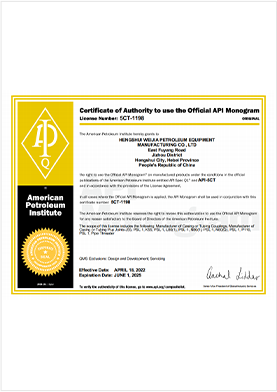- Afrikaans
- Albanian
- Amharic
- Arabic
- Armenian
- Azerbaijani
- Basque
- Belarusian
- Bengali
- Bosnian
- Bulgarian
- Catalan
- Cebuano
- Corsican
- Croatian
- Czech
- Danish
- Dutch
- English
- Esperanto
- Estonian
- Finnish
- French
- Frisian
- Galician
- Georgian
- German
- Greek
- Gujarati
- Haitian Creole
- hausa
- hawaiian
- Hebrew
- Hindi
- Miao
- Hungarian
- Icelandic
- igbo
- Indonesian
- irish
- Italian
- Japanese
- Javanese
- Kannada
- kazakh
- Khmer
- Rwandese
- Korean
- Kurdish
- Kyrgyz
- Lao
- Latin
- Latvian
- Lithuanian
- Luxembourgish
- Macedonian
- Malgashi
- Malay
- Malayalam
- Maltese
- Maori
- Marathi
- Mongolian
- Myanmar
- Nepali
- Norwegian
- Norwegian
- Occitan
- Pashto
- Persian
- Polish
- Portuguese
- Punjabi
- Romanian
- Russian
- Samoan
- Scottish Gaelic
- Serbian
- Sesotho
- Shona
- Sindhi
- Sinhala
- Slovak
- Slovenian
- Somali
- Spanish
- Sundanese
- Swahili
- Swedish
- Tagalog
- Tajik
- Tamil
- Tatar
- Telugu
- Thai
- Turkish
- Turkmen
- Ukrainian
- Urdu
- Uighur
- Uzbek
- Vietnamese
- Welsh
- Bantu
- Yiddish
- Yoruba
- Zulu
Understanding the Differences Between Well Tubing and Casing in Oil and Gas Operations
Understanding Well Tubing and Casing Key Components of Oil and Gas Production
In the oil and gas industry, well construction and integrity are crucial for the successful extraction of resources. Two critical components of this process are well tubing and casing. Both of these elements play a significant role in ensuring that the well functions effectively and safely.
What is Well Casing?
Casing is a series of pipes that are installed in the borehole during the drilling process. It serves multiple purposes it strengthens the wellbore, prevents the collapse of the hole, and protects the surrounding environment by preventing contaminants from entering aquifers. Typically made of steel or sometimes plastic, casing is laid in sections, and each section is cemented into place to provide stability and a secure seal against any fluids.
There are several types of casing, each serving specific functions depending on the depth and nature of the well. Surface casing is usually the first layer installed; it provides support for the top of the borehole and protects shallow groundwater. Intermediate casing is utilized when there are significant geological challenges, such as unstable formations. Finally, production casing is positioned before production tubing is installed; it isolates the production zone to ensure efficient and safe extraction of hydrocarbons.
What is Well Tubing?
Well tubing, on the other hand, is the pipe that runs from the surface of the well down into the production zone. Its primary purpose is to transport oil and gas from the reservoir to the surface. Tubing is typically smaller in diameter than casing and is therefore easier to manipulate when it comes to installation and maintenance.
well tubing and casing

Made from materials designed to withstand high pressures and corrosive environments, tubing is crucial for the effective operation of the well. Various types of tubing are available depending on the specific requirements of the well, such as the anticipated production capacity and the nature of the fluid being extracted.
The Relationship Between Tubing and Casing
Casing and tubing are interconnected components that work together to facilitate successful oil and gas production. While casing provides structural support and environmental protection, tubing is focused on the efficient transportation of resources. Proper installation and maintenance of both are essential to prevent issues such as leaks, blowouts, and contamination.
The relationship between casing and tubing is also reflected in how they affect well production efficiency. For instance, a well that lacks proper casing might suffer from collapses or contamination, leading to decreased productivity. Conversely, if the tubing is not adequately sized or resistant to the well's conditions, it can lead to failures that halt production, causing financial losses.
Conclusion
In conclusion, well tubing and casing are vital components of oil and gas extraction, each fulfilling distinct yet complementary roles. Understanding their functions and relationship provides insight into the complexities of well construction and operation. As the industry continues to evolve, advancements in materials and technology will further enhance the effectiveness and safety of these vital elements, ensuring that the oil and gas sector can meet the growing global energy demands while minimizing environmental impact. Maintaining the integrity of both casing and tubing is paramount for the sustainability and profitability of well operations, highlighting their significance in the broader context of resource extraction.
-
Tubing Pup Joints: Essential Components for Oil and Gas OperationsNewsJul.10,2025
-
Pup Joints: Essential Components for Reliable Drilling OperationsNewsJul.10,2025
-
Pipe Couplings: Connecting Your World EfficientlyNewsJul.10,2025
-
Mastering Oilfield Operations with Quality Tubing and CasingNewsJul.10,2025
-
High-Quality Casing Couplings for Every NeedNewsJul.10,2025
-
Boost Your Drilling Efficiency with Premium Crossover Tools & Seating NipplesNewsJul.10,2025







